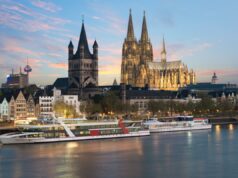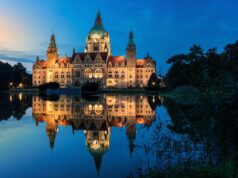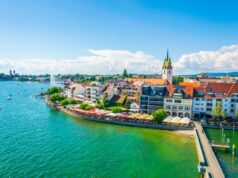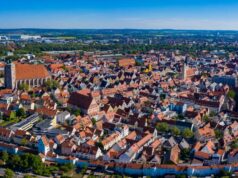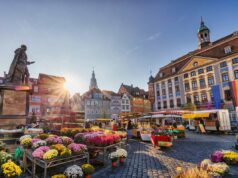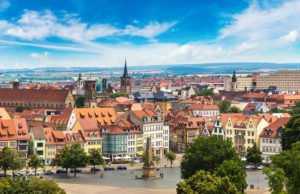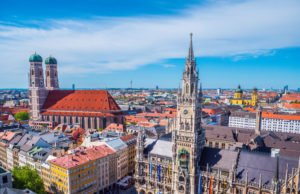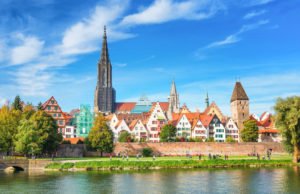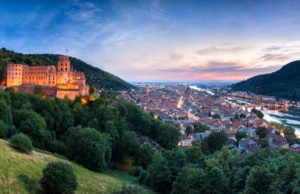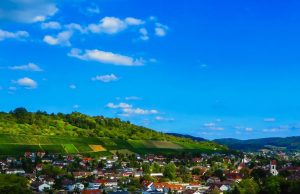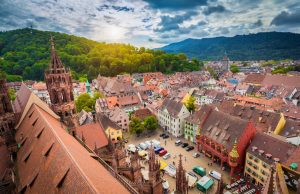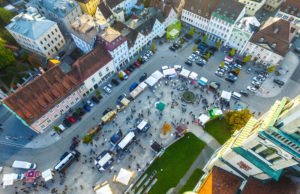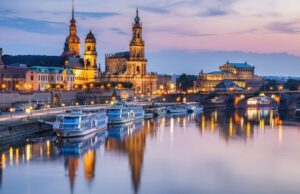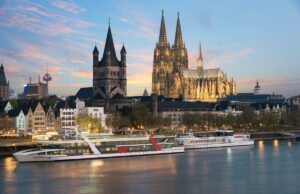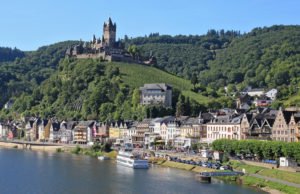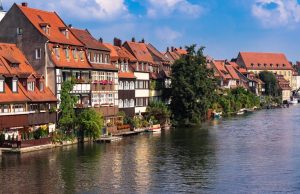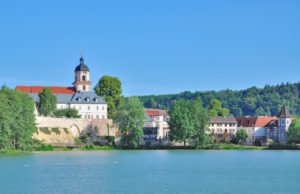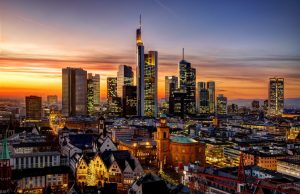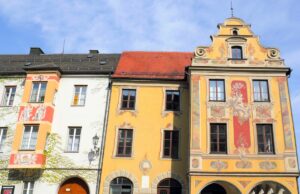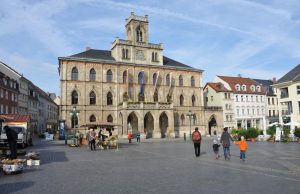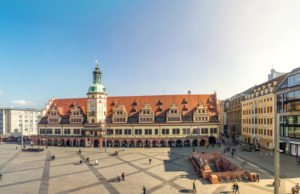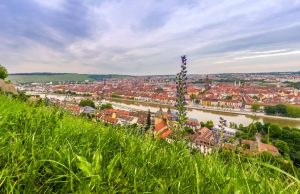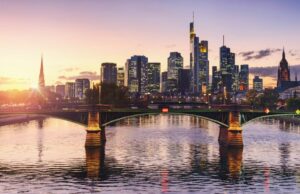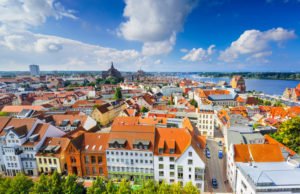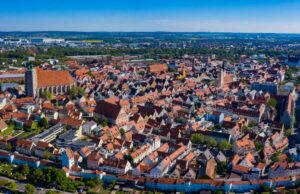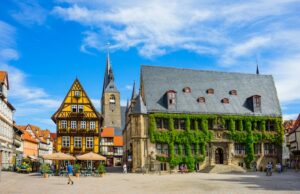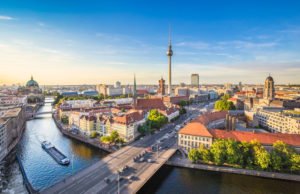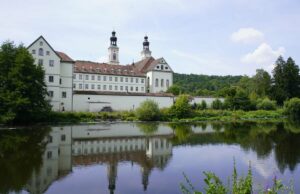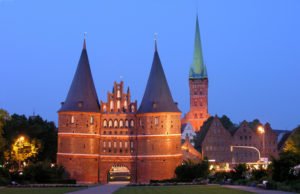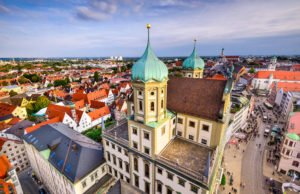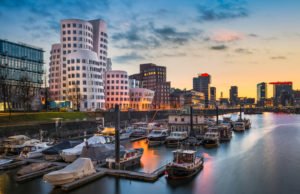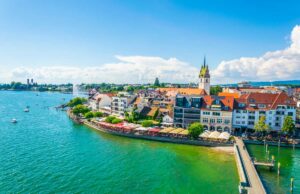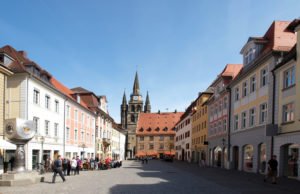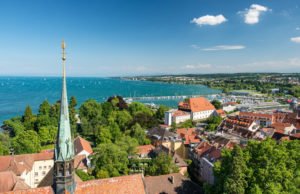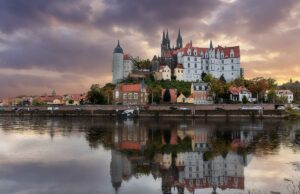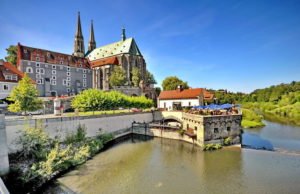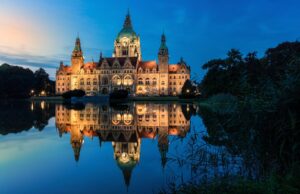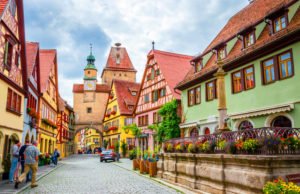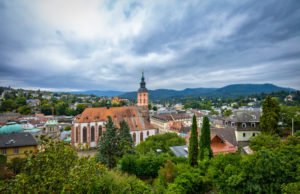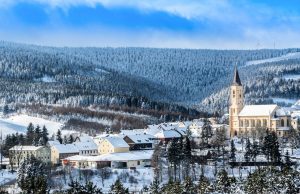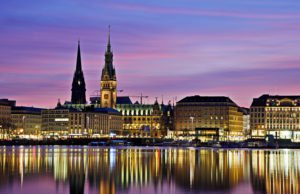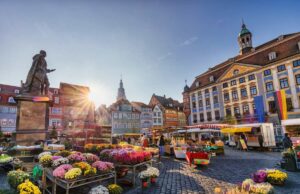
Reputedly Germany’s oldest city, Trier has an enviable valley location, on the banks of the Moselle river. Although the city is known mainly for its Roman heritage, this part of Rhineland-Palatinate, near the border with Luxembourg, is also famous for its wines. Grape vines cover the surrounding hills, while the city itself is a UNESCO World Heritage site. Eight of its monuments are singled out for special mention in the UNESCO listing.
Getting There
There is an excellent choice of airports within reasonable distance. Luxembourg and Frankfurt am Main are the choice for those arriving from outside Europe. Those flying from elsewhere on the continent, including the UK, may also be able to fly into Saarbrücken, Cologne/Bonn, or Frankfurt Hahn. The latter two are the choice for passengers arriving on budget airlines.
It is easy to reach Trier by train from Frankfurt am Main and Cologne/Bonn. For those arriving at Frankfurt Hahn, there is a direct bus service to Trier, while those coming from Saarbrücken must take a bus from the airport to the main railway station in Saarbrücken, from where direct trains depart for Trier. Anyone arriving at Luxembourg Airport between Monday and Friday can take a direct bus service (Bus 117 of Voyages Emile Weber) to Trier; weekend arrivals must take the city bus from the airport to the railway station, to pick up a train for Trier.
Thanks to Trier’s western location, the city is also easy to reach by car, if travelling from Luxembourg, France, the Netherlands, or Belgium.
What to See
Trier has more than enough to fill several days’ sightseeing. Given the city’s age, many of its most famous attractions are historical, but the hillside vineyards are equally tempting to many. Trier’s top attraction is the Porta Nigra (“Porta”, to the locals), or the “Black Gate”. This city gate, the largest north of the Alps, is thought to look much as it did when the Romans first built it. In the summer, visitors can take a tour from a guide dressed as a centurion. However, access to the gate is maintained all year round.
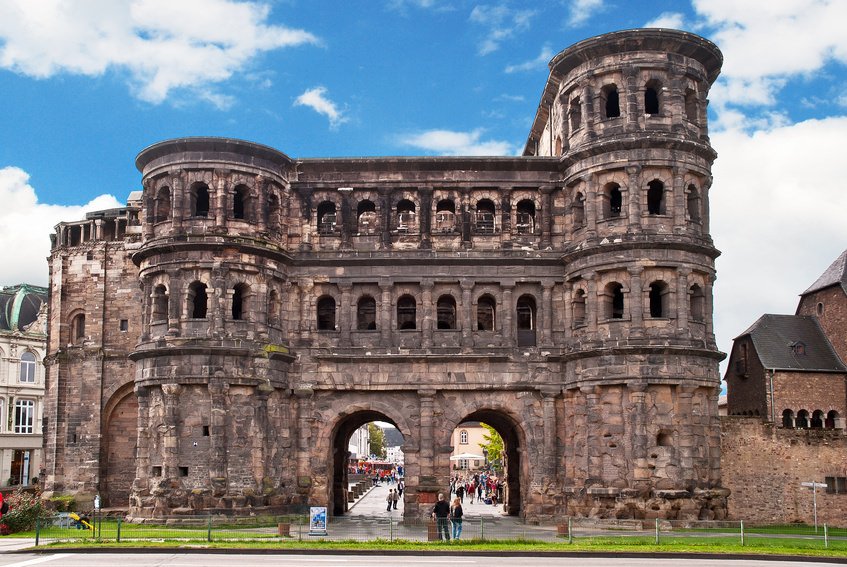
Still on the trail of the city’s Roman heritage, the Imperial Roman Baths (Kaiserthermem) are said to have been one of the grandest ever constructed. The site can get crowded, but is easy to navigate, with signs in both German and English. Meanwhile, anyone keen to experience a modern day equivalent of the Roman Baths will be pleased to learn that Trier is home to several spas.
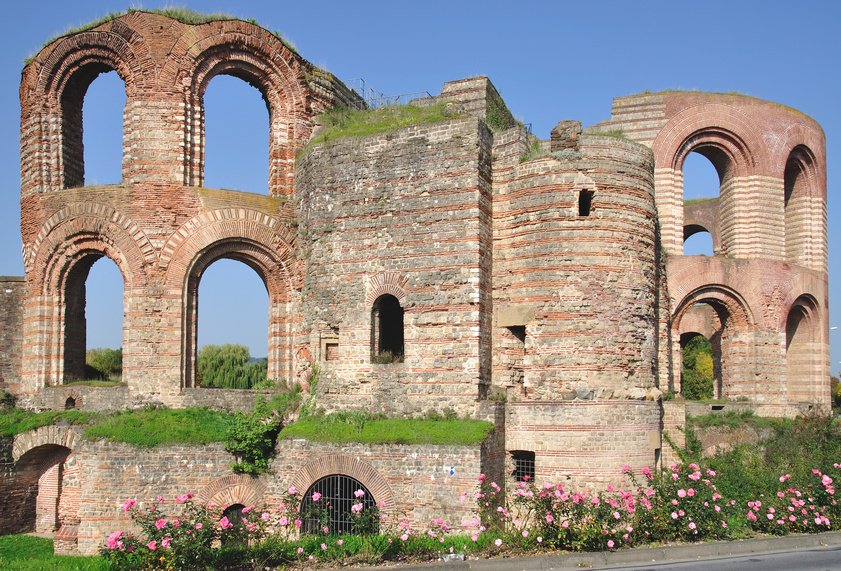
Trier’s High Cathedral of St Peter is one of two non-Roman monuments included in the UNESCO World Heritage listing. Built by the first Christian Roman Emperor, and restored after its partial destruction during the Second World War, it is Germany’s oldest cathedral, and home to many significant works of art. It is also a place of pilgrimage, receiving hundreds of pilgrims, who come to see the “Holy Robe”. Legend suggests that this is the garment Jesus wore during his crucifixion. Visitors should be aware that it is exhibited to the public only very infrequently. Connected to the cathedral by a cloister, the Church of our Lady is another “oldest”: it is the earliest example of a Gothic church in Germany.
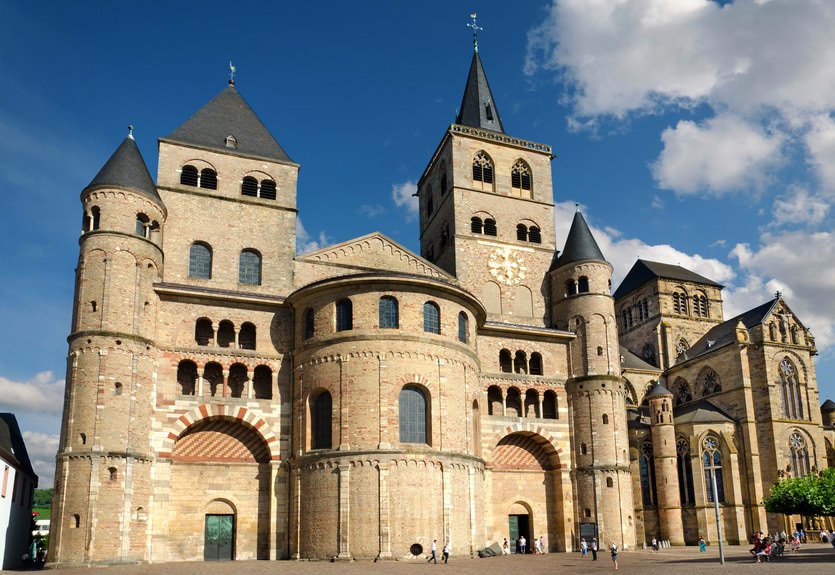
Those looking for either an overview, or an insight, into Trier’s history, might want to visit the city’s magnificent Archaeological Museum (Rheinisches Landesmuseum). Although many of its exhibits relate to the Roman era, it deals comprehensively with the entire period of the region’s known inhabited history.
The medieval marketplace (Hauptmarkt) is still the heart of the city. As well as the cathedral, the city church, a clutch of half-timbered houses, the old Jewish quarter, and a medieval fountain, there are cafes, restaurants, ice-cream sellers, souvenir shops, and bookshops. Many of the surrounding streets are given over to pedestrians, making this an excellent place for a wander, particularly in the summer months.
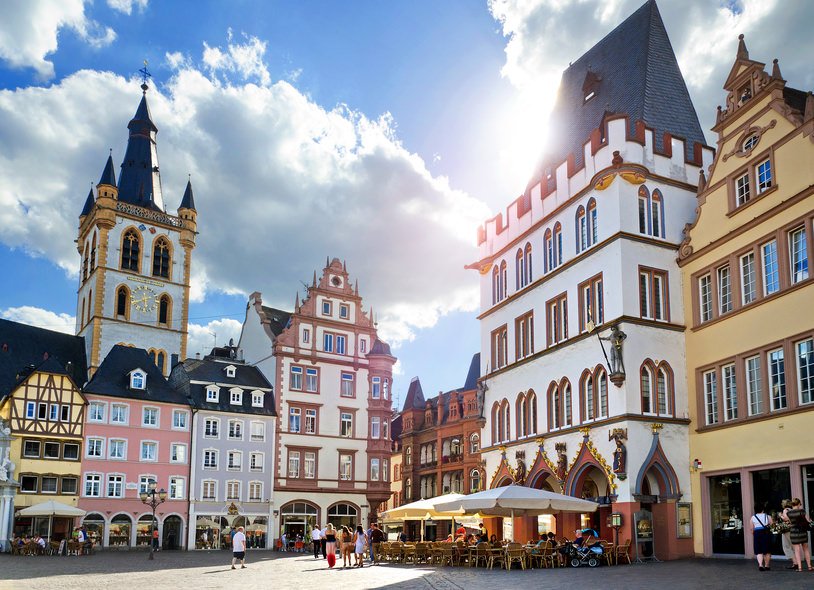
More than 1500 years after the Romans left Trier, Karl Marx was born in the city. The house of his birth is now a museum. It is open all year round.
Each year, Trier hosts a Christmas market. The Hauptmarkt provides a picturesque backdrop for 95 stalls, selling wooden toys and ornaments, glassware, Christmas decorations, glühwein, hot chestnuts, gingerbread, and the like. There is a puppet show to entertain children, and a brass brand for general seasonal merriment.
What to Eat and Drink
Trier offers some excellent examples of traditional Rhineland food. One to look out for is the eighteenth century peasant dish of Pfälzer Saumagen, still a local favourite. Similar to the Scottish haggis, this dish uses a pig’s stomach as a case to hold a meal of minced veal, potatoes, vegetables, herbs, and spices. The resulting concoction is cooked, but not boiled, in hot water. The stomach casing is eaten as part of the meal. Today, most restaurants pride themselves on using only the finest ingredients when preparing this dish.
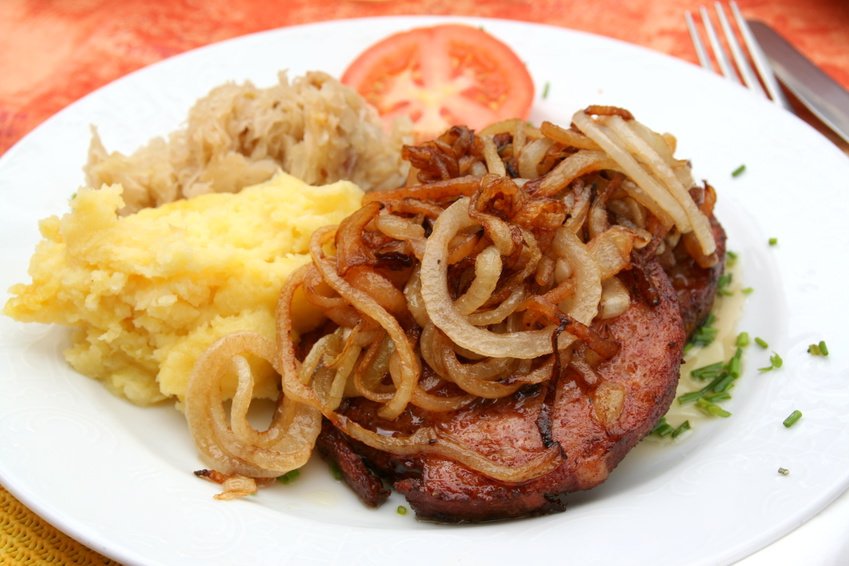
The city also makes a point of showcasing Roman dishes. Several restaurants offer patrons the chance to try authentic Roman cuisine. One of the best such establishments is Zum Domstein, where recipes taken from the Roman cookbook, “De re coquinaria”, are recreated for today’s diners. Those fearing they will be served dormice, or the like, will be relieved to learn that the chosen dishes lean far more to modern tastes: perna cum caricis, (ham, cooked with fig and myrtle), and fabaciae virides (green beans, cooked in fish sauce and herbs) are two examples.
Unsurprisingly, for a wine region, the excellent local vintages, which include many different Rieslings, are readily available throughout the city. And, for connoisseurs, there are wine tastings galore at many of the surrounding vineyards.
As an alternative to wine, Viez, the local version of Apfelwein (apple cider) is popular, particularly with the city’s student population.
Where to Stay
Many of the hotels, budget as well as higher-end, are in the environs of the Hauptmarkt. For visitors not too bothered by noise, this is an ideal area in which to stay, simply to soak up the atmosphere of this lovely square. However, Trier is an eminently walkable city, and so staying a little further away is no particular problem. Booking in advance is advisable during the peak summer period, and when the Christmas market is running.
When to Visit
As with many western European destinations, high season tends to be during May to September. These are the busiest months for tourism in Trier and also when the majority of tours run. The weather is warmest in July and August, when temperatures can reach the low eighties. However, even in these two months, visitors should expect rain: Trier receives an average of five to ten inches each month. Winters are cold, with temperatures typically dipping into the teens during January. Early May or early October can be good times to visit, particularly for those who do not have to adhere to school holidays. At those times of year, the weather is not too cold, most attractions are open, and there are fewer visitors.
The Christmas market runs from the end of November until a couple of days before Christmas Eve. The 2017 dates are 27th November – 22nd December.


